Introduction: Substack vs Ghost in 2025 (TL;DR and how to choose fast)
If you’re an indie writer, solo creator, SaaS team, or media startup deciding between a newsletter-first platform and a full publishing stack, this 2025 guide is for you. We’ll help you choose fast, with a clear TL;DR plus an at-a-glance comparison.
What’s new in 2024–2025 that could change your choice:
Ghost 6.0 sharpened its position as a publisher-grade CMS with stronger workflows, modern themes, and a tighter blog + newsletter experience (still 0% platform fees).
Substack doubled down on network effects (Recommendations, Notes, and app discovery), keeping its “no-setup” appeal for creators who want instant distribution.
SEO and ownership matter more: with AI search and SGE-type experiences surfacing authoritative sources, platforms that prioritize technical SEO and full control have an edge.
Quick picks:
Choose Substack if you want built-in network effects and a no-setup newsletter.
Choose Ghost if you want full control, better SEO, and 0% platform fees.
At a glance:
Feature | Substack | Ghost |
|---|---|---|
Editor | Minimalist, distraction-free newsletter editor | Full-featured editor with blocks, embeds, and custom HTML/CSS options |
SEO | Basic SEO; limited technical controls | Robust technical SEO (clean URLs, canonicals, sitemaps, speed) |
Discoverability | Strong built-in network (Recommendations, Notes, app) | Open-web discoverability via SEO; no walled network |
Pricing model | Free to start; 10% revenue share on paid subs (plus processing) | Flat hosting; 0% platform fees (pay only processing) |
Custom domain | Available (one-time setup fee) | Native support; full domain flexibility |
Automations | Limited; no advanced sequences | Basic built-in; advanced via integrations |
Themes/Branding | Very limited customization | Extensive themes; deep branding and layout control |
Analytics | Basic email analytics | Site + member analytics; extensible via integrations |
Data ownership | You own your list; platform-controlled environment | Full ownership of content, members, and code (open source) |
Note: If you’re a team that needs an SEO-first blog with an integrated newsletter and AI automation, consider BlogBowl. It’s built for fast, Google-friendly publishing with auto keyword research, internal linking, and embedded media generation - details in the Verdict section.
Quick decision guide: Pick based on your goals
If your priority is speed to publish and network-driven growth → pick Substack.
If your priority is search traffic, brand control, and predictable costs → pick Ghost.
If you run a SaaS/product blog and want AI-assisted SEO content plus a built-in newsletter → consider BlogBowl. It’s ideal when you need rapid, SEO-first publishing, automated keyword research, internal linking, and consistent content output without hiring a team.
Use cases matrix:
Journalism/op-eds: Substack for instant distribution and community conversation.
Evergreen how‑tos: Ghost for technical SEO, custom structures, and long-term ranking.
Paywalled memberships: Both work; Ghost wins on 0% platform fees and deeper branding.
Multi-author publications: Ghost for roles, editorial workflows, and design flexibility.
Niche communities: Substack for network effects; Ghost if you want gated hubs you fully control.
Time-to-value vs. long-term scalability:
Substack = fastest time-to-value (minutes to publish, built-in discovery), but limited customization, SEO controls, and recurring platform fees on paid subs.
Ghost = slightly longer setup, but superior long-term scalability with full ownership, advanced SEO, and predictable costs.
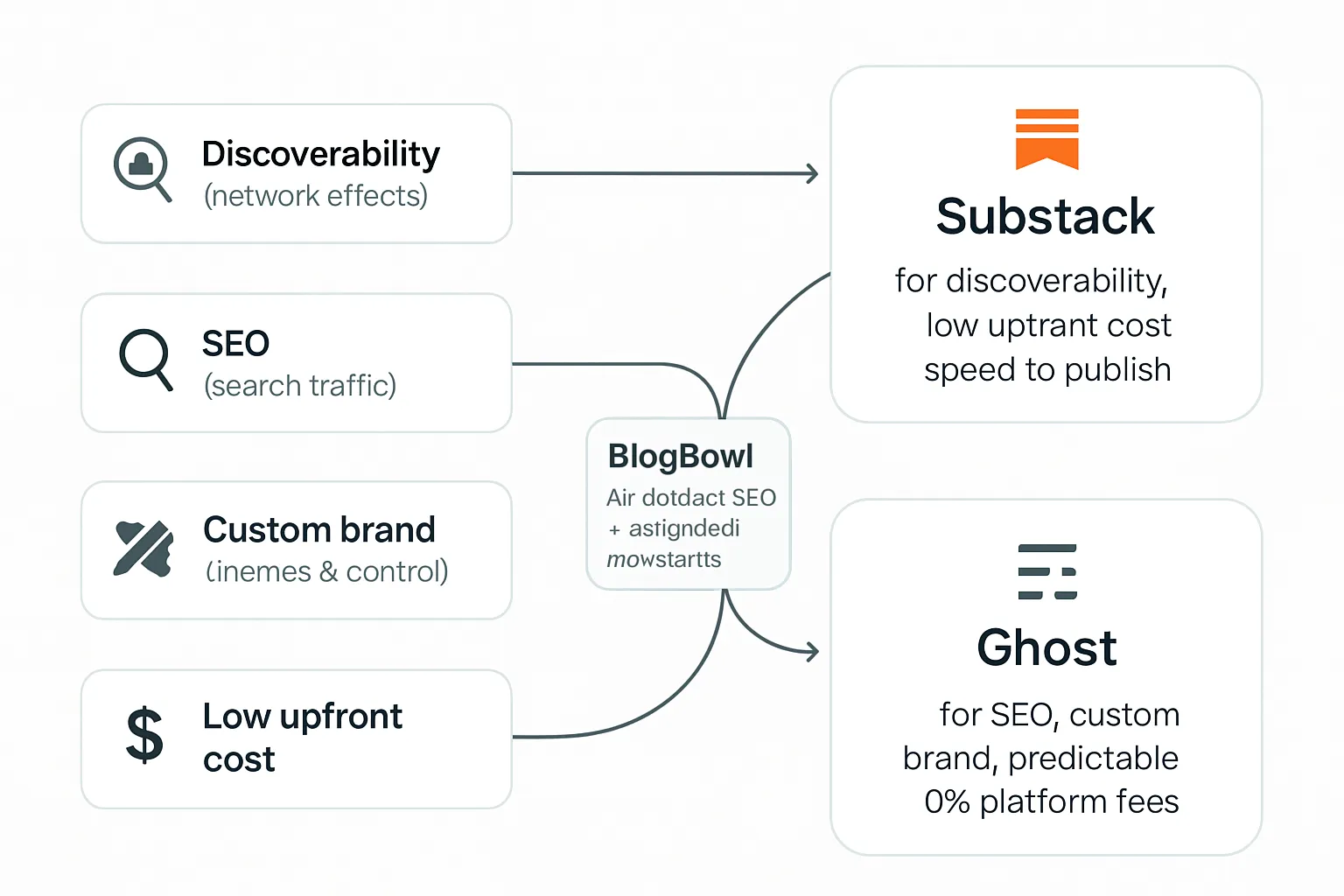
Platform overviews and philosophy
Substack in brief
Newsletter-first platform with built-in network (Recommendations, Notes) and simple paywalls
Strengths: simplicity, built-in discovery, low friction to start
Constraints: limited customization and automations; revenue share on paid subs
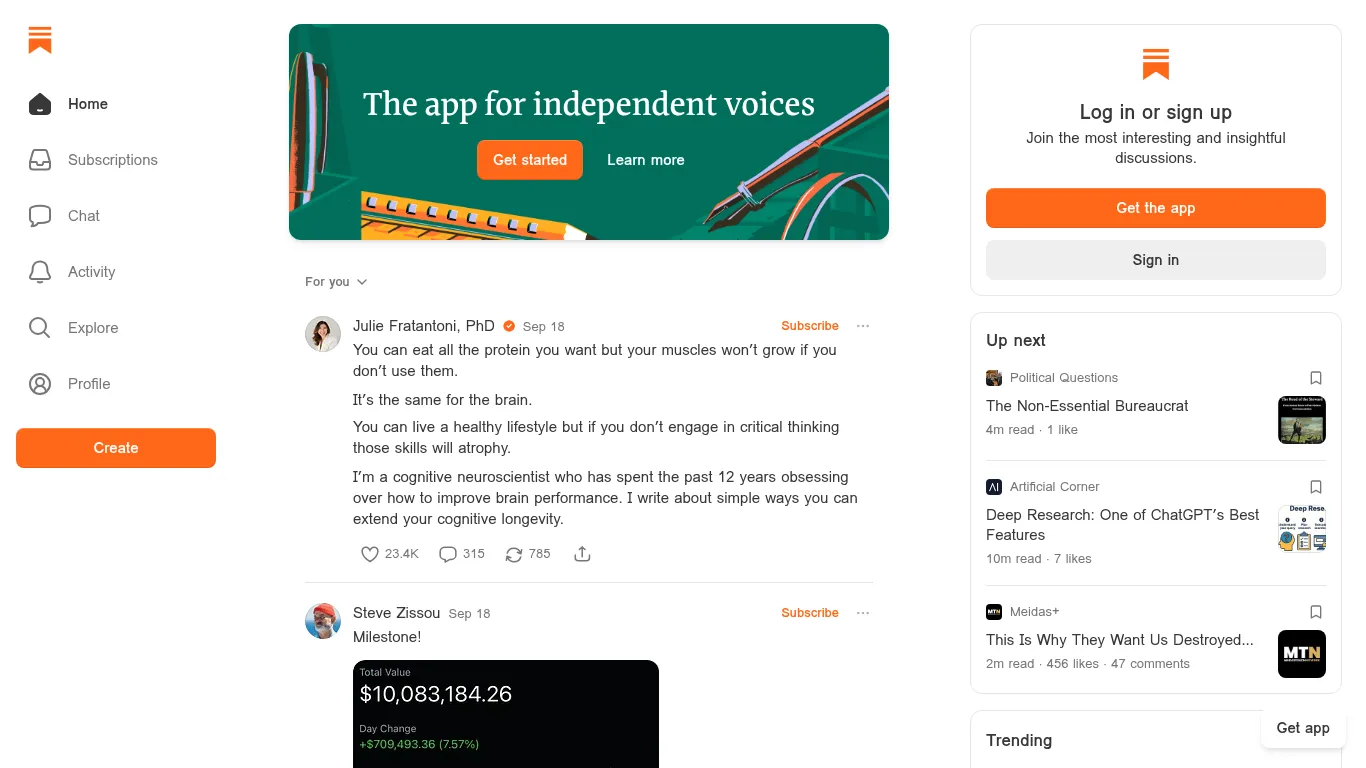
"Substack surpassed 3M paid subscriptions as of 2024." - Source
Ghost in brief
Open-source, CMS + memberships + newsletter, 0% platform fees, strong SEO and branding
Strengths: control, extensibility, themes, self-host or Ghost(Pro)
Constraints: fewer native growth gimmicks; deeper customization may need dev help
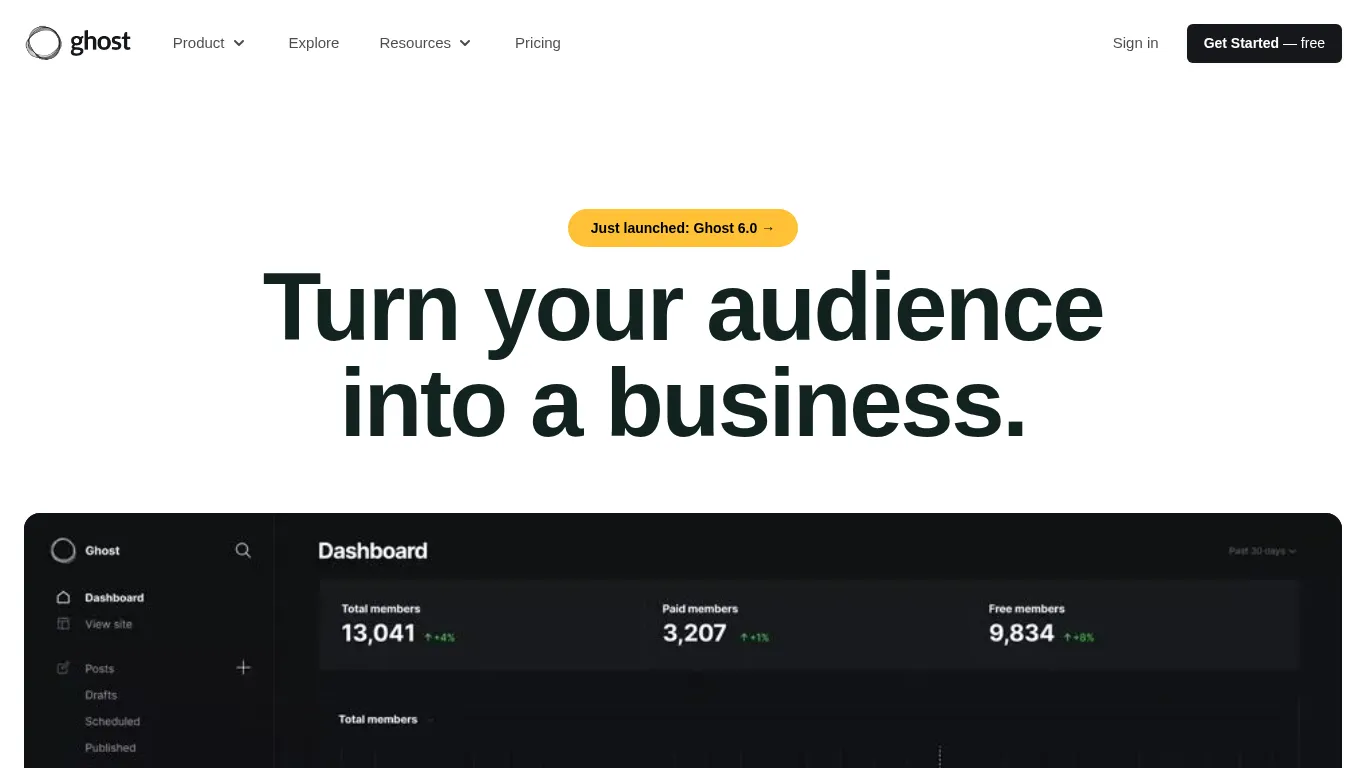
Who thrives on each
Solo writers and journalists tend to thrive on Substack thanks to network-driven discovery and low setup friction.
Brands and publishers building a durable content hub (blog + newsletter + memberships) typically thrive on Ghost for its SEO, control, and 0% fees.
Pricing, fees, and break-even math
Substack is free to start and takes ~10% on paid subscriptions (plus payment processing). That makes it great in the very early stage and keeps costs proportional to revenue. Ghost uses fixed monthly/annual pricing with 0% platform fees (plus payment processing), which makes costs predictable as you scale.
Pricing/fees matrix and scenario calculator (platform fees only; excludes payment processing):
Paid subscribers | Price per month | Monthly revenue | Substack platform fee (10%) | Ghost platform fee (0%) | Difference (Substack vs Ghost) |
|---|---|---|---|---|---|
500 | $5 | $2,500 | $250 | $0 | $250 |
500 | $10 | $5,000 | $500 | $0 | $500 |
1,000 | $5 | $5,000 | $500 | $0 | $500 |
1,000 | $10 | $10,000 | $1,000 | $0 | $1,000 |
5,000 | $5 | $25,000 | $2,500 | $0 | $2,500 |
5,000 | $10 | $50,000 | $5,000 | $0 | $5,000 |
Break-even scenarios:
Fixed-fee (Ghost) typically beats revenue share (Substack) once your monthly Substack platform fee exceeds your Ghost hosting cost. For example, if your Ghost plan is ~$30–$100/month, you’d break even around $300–$1,000 in monthly platform fees (roughly $3,000–$10,000 in monthly subscription revenue at a 10% platform fee).
This means the crossover often occurs around 600–2,000 paying subscribers at $5/month (your mileage varies by plan, send volume, and required features).
"Substack charges a 10% fee on each paid subscription transaction." - Source
"Ghost charges 0% transaction fees on premium subscriptions (standard payment processor fees still apply)." - Source
Total cost of ownership:
Domains: Budget for a custom domain and DNS management.
Email sending: Payment processing and sender reputation matter; deliverability scales with list size.
Add-ons: Integrations, themes, and analytics tools can add costs elsewhere if your platform is limited.
Time-to-customize: Substack is fast to ship with minimal setup; Ghost offers deeper branding and structure, which can require more initial setup time.
Advice for early vs. late-stage creators:
Early-stage: If you’re validating an idea and want immediate distribution with minimal friction, Substack’s revenue share may be worth it while you grow.
Scaling/late-stage: If you have predictable growth and want to maximize margins, own your brand, and invest in SEO and site structure, Ghost’s 0% platform fees and fixed pricing deliver stronger long-term unit economics.
Forecasting your next 12 months:
Model subscribers, ARPU (monthly price), and churn to estimate revenue.
Apply platform fee assumptions (10% vs. 0%) and add payment processing to see true net.
Stress-test two paths: fast start with revenue share vs. fixed-cost ownership - and revisit quarterly as you approach break-even.
Writing and publishing experience
Substack
Minimalist editor designed for fast drafting and publishing. You get clean inline formatting, image drops, and instant email sends without setup overhead.
Content types: newsletter sends, standalone posts, native podcast hosting, and Notes for quick, social-style updates to your audience.
Built-in comments and discussion threads on posts help turn newsletters into conversations.
Collaboration basics include guest posts/co-authors and simple scheduling.
Constraints: limited content blocks, no true reusable components, and very limited custom HTML/CSS control. Great for speed; less so for advanced layout or brand-specific design.
Ghost
Block-based editor with rich formatting depth: embeds (video, audio, social), callouts, buttons, galleries, code blocks, product/cards, and a custom HTML card for fully custom components.
Unified blog + newsletter: publish once to the web and optionally send as an email. Support for multiple newsletters and member‑only content tiers out of the box.
Collaboration and roles for teams (e.g., Admin, Editor, Author, Contributor) with scheduled publishing, custom templates, tags/collections, and custom routes/pages for more complex site structures.
Themes and custom templates let you create reusable layouts, while the HTML card and theme partials enable repeatable components. It’s highly flexible for brand systems and editorial design.
What creators feel day-to-day
Drafting flow: Substack’s editor is the fastest for a single writer shipping frequent newsletters. It minimizes choices so you can focus on writing and hit publish quickly.
Formatting depth: Ghost’s editor offers more structure and on-page elements, which helps for evergreen guides, long-form explainers, and posts that need visual hierarchy or custom components.
Reusable building blocks: Ghost supports repeatable patterns via themes, custom templates, and HTML cards - useful for CTAs, feature boxes, and product sections. Substack has fewer options here.
Friction vs flexibility: Substack prioritizes speed and low friction, ideal for journalism/op-eds and serial newsletters. Ghost prioritizes flexibility and control, better for creators who want a cohesive content hub (blog + newsletter) with brand-specific design and long-term SEO structure.
SEO, discoverability, and audience growth
Substack
Built-in discovery via Recommendations, cross-promos, and network effects; Notes can boost exposure.
SEO basics exist but with limited control over technical levers like redirects and granular canonical/noindex settings.
Best for social/newsletter-led growth and fast network traction, not search-first strategies.
Ghost
Strong technical SEO defaults (XML sitemaps, structured data, canonical tags, clean URLs, fast performance).
Full control over site architecture, redirects, and content models to build topical depth and expertise.
Growth stack via integrations: referrals, automations, lead magnets, CRM syncs, and analytics.
When each wins
Substack: fastest path to an audience when you can leverage network effects and cross-recommendations.
Ghost: best for compounding search traffic, brand entity building, and durable evergreen libraries.
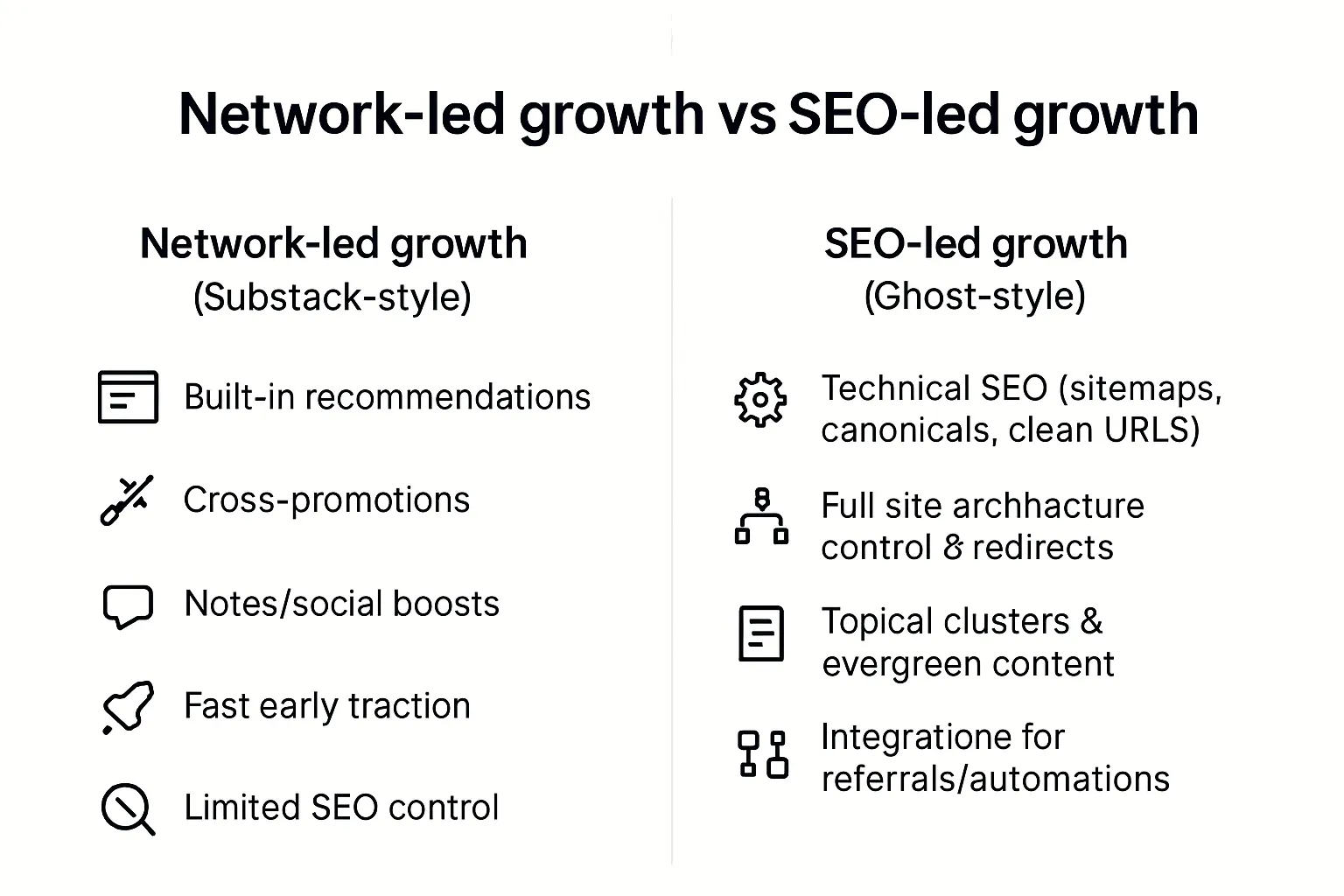
Analytics, deliverability, and automations
Substack
Core analytics: opens, clicks, send volume, basic growth trends; limited audience segmentation beyond free vs. paid.
Deliverability: platform-managed sending with constraints on custom sending domains and brand headers; basic UTM support for link tracking.
Automations: no native multi‑step sequences or behavior-triggered workflows; simple scheduling and one-off sends are the norm.
Ghost
Analytics: member-level insights, post-level performance, and list growth; segment audiences by membership tier, tags, or behavior; extend with custom fields via integrations.
Deliverability: custom sending domain and branded sender details; dedicated routing options via infrastructure or by pairing Ghost with an ESP for advanced deliverability management.
Automations: connect to ESPs (for sequences, drip campaigns, and tagging) and CRM via native integrations or API; webhooks enable real-time sync to data warehouses and ops tools.
Practical automation setups
Welcome/onboarding:
Substack: single welcome email and scheduled follow-ups (manual or basic).
Ghost: trigger multi‑email onboarding sequences via ESP (e.g., welcome → product tour → value recap), with tags/segments updated via webhooks.
Win-backs:
Substack: manual re‑engagement campaigns to inactive readers.
Ghost: automated win‑back flows using ESP logic (e.g., “no opens in 30 days” → targeted incentive) and dynamic segments.
Referral rewards:
Substack: leverage platform recommendations/cross‑promos.
Ghost: implement referrals via integrations (referral platforms, couponing) and track conversions through custom events, webhooks, and API.
Branding, customization, and extensibility
Substack
Limited layout/theming; brand basics like logo, colors, and a small font set.
Few options for custom landing pages, complex navigation, or reusable page templates.
Ghost
Hundreds of themes plus a full theme framework; build custom pages, routes, and taxonomies to shape a true content hub.
API/webhooks and rich embeds/integrations; optional self-hosting for total control over stack, code, and data.
Why this matters
A stronger brand experience builds trust and lifts conversions.
Custom architecture (landing pages, resource hubs, topic clusters) helps you grow beyond a single newsletter into a durable media property.
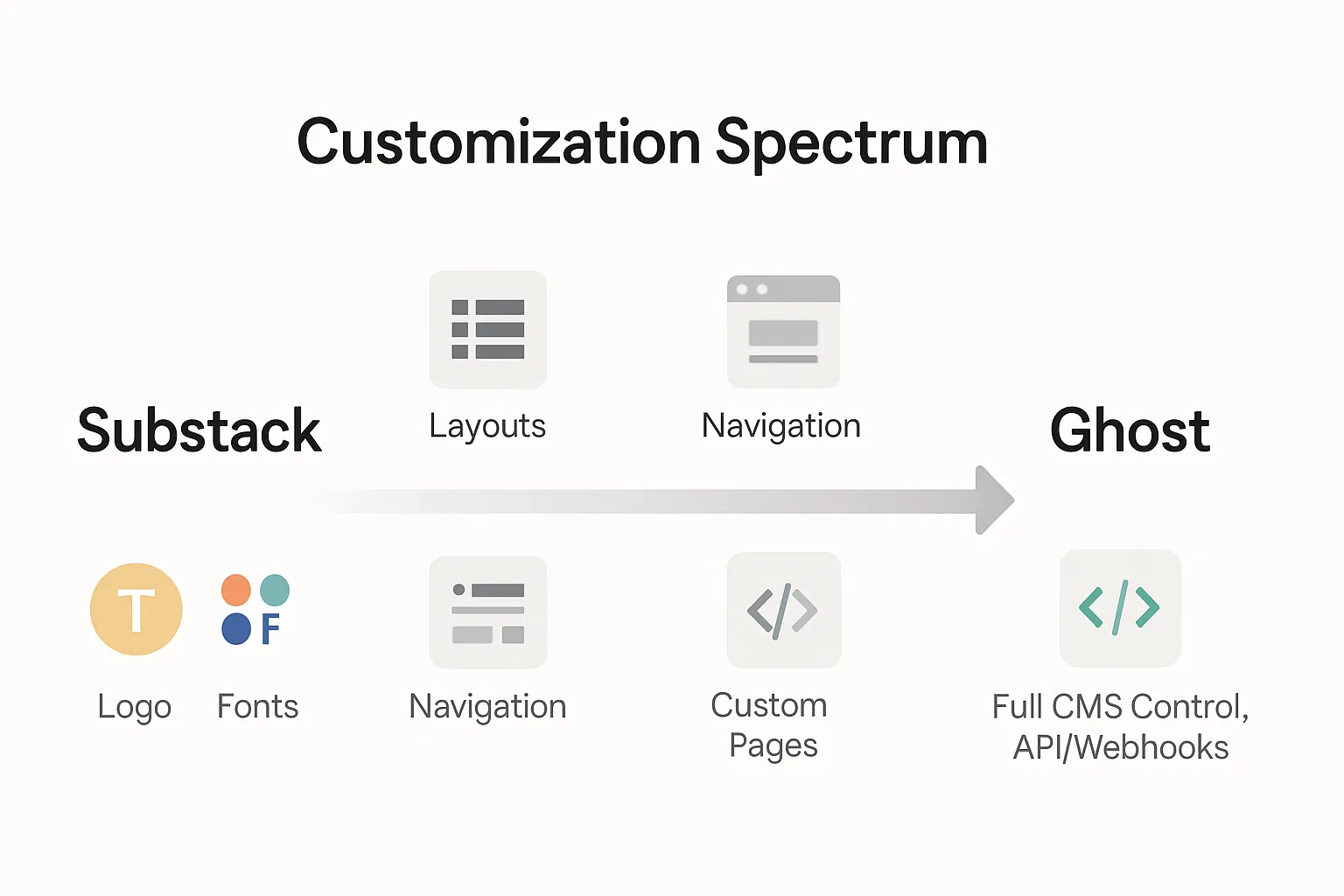
Migration, data ownership, and privacy
Substack → Ghost
What migrates: posts, member records (free and paid), paid tiers via Stripe connection, and basic site structure.
Common gotchas: set up redirects to preserve link equity, maintain canonical history, and carefully map categories/tags to the new architecture.
Simple checklist for a smooth move:
Export content and members
Import to your new stack (connect Stripe for paid tiers)
Configure 301 redirects and verify canonicals
Apply templates and map tags/categories
Test on staging: content, links, emails, paywalls
Launch with DNS cutover and monitor crawl/indexing
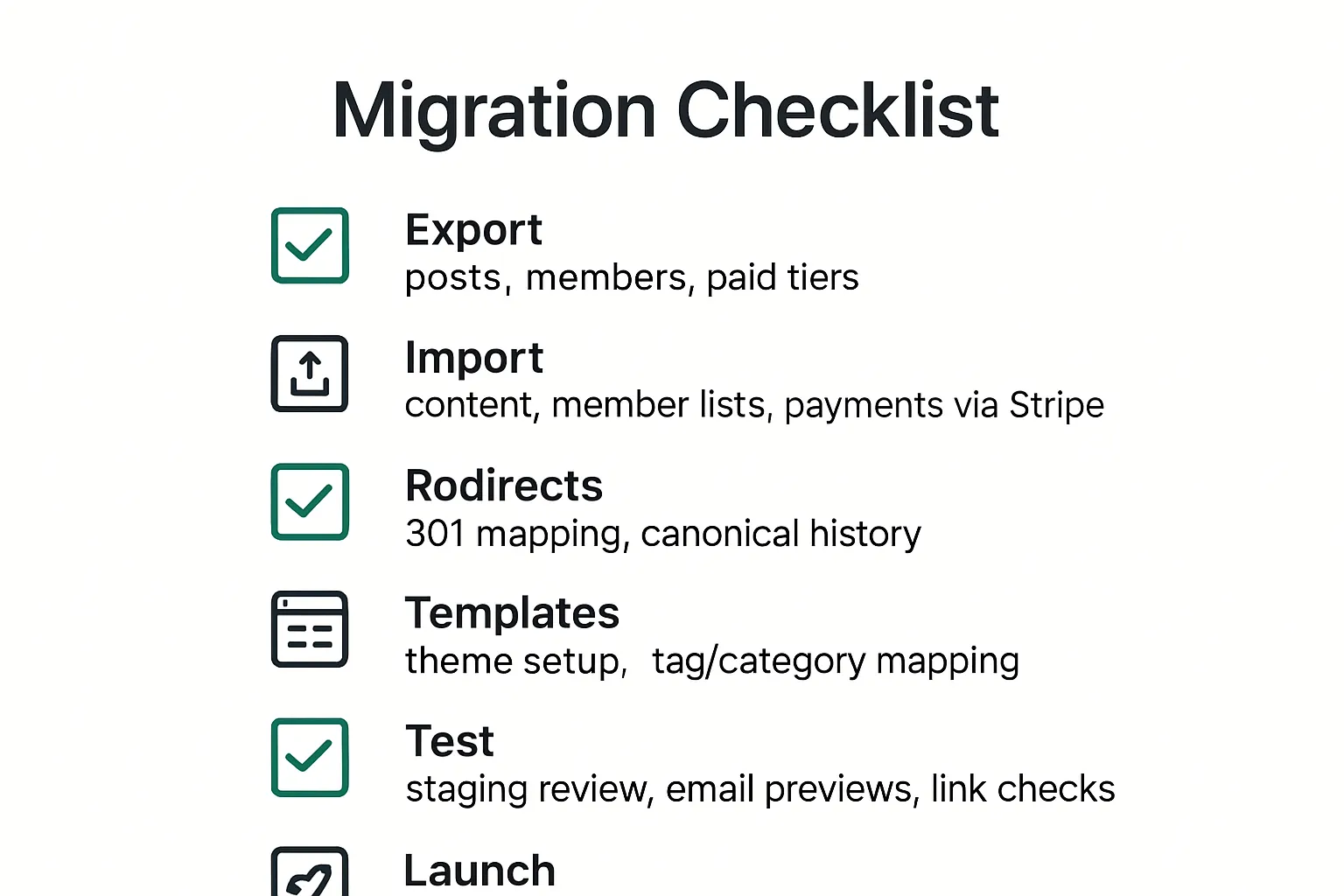
Ownership & compliance
Data portability: ensure you can export members, content, and payment relationships; confirm opt-in status and consent fields travel with exports.
GDPR considerations: document lawful basis (consent/contract), log consent timestamps, and provide simple unsubscribe and data deletion flows.
Double opt-in and custom consent: reduce spam risk and align with regional regulations.
Backups and future-proofing: prioritize open standards (CSV/JSON, portable themes) and versioned backups for business resilience.
Where BlogBowl fits
If you want an SEO-first blog plus built-in newsletters and AI-driven publishing at scale, BlogBowl removes setup/ops friction with automated daily SEO articles, internal linking, image/video embeds, and built-in analytics - ideal for SaaS teams that need compounding organic growth without headcount.
Final verdict: Which one should you choose? (+ when BlogBowl makes more sense)
Choose Substack if:
You want the simplest path to publishing and plan to lean on built-in network effects (Recommendations, cross-promos, Notes).
You’re comfortable with limited customization and accept a revenue share once you turn on paid subscriptions.
Your growth playbook is social + newsletter-first, not search-first.
Choose Ghost if:
You need strong SEO, full brand control, and a proper site architecture (themes, custom pages, routes, taxonomies).
You prefer predictable costs at scale (0% platform fees) and the flexibility to self-host or use managed hosting.
You’re building a durable content hub - evergreen articles, multiple newsletters, memberships - where search traffic compounds over time.
Still undecided?
Start on Substack to validate the concept quickly and build momentum through the network.
Migrate to Ghost when your brand, SEO, or margins demand it - especially once platform fees begin to bite or you need deeper customization and data ownership.
Where BlogBowl shines for businesses:
SaaS and startups that want an SEO-optimized blog that ships daily AI content and an integrated newsletter without adding headcount.
Teams managing multiple properties: multi-site management, automatic internal linking, AI images/video embeds, privacy-friendly analytics, and clean technical SEO out of the box.
If your priority is compounding organic growth plus operational efficiency, BlogBowl lets you focus on content and audience while it automates setup, SEO, and publishing.
Next steps:
Run a short pilot on your likely fit: Substack for network-led traction, Ghost for SEO-led compounding.
Track signal: subscriber growth, CAC, organic impressions/traffic, CTR, and RPM/net margins (after platform fees).
Commit once you see the winning channel. If you’re a SaaS team or content-led startup, consider BlogBowl to accelerate SEO output and keep your newsletter under the same roof - so you scale faster with less effort.


